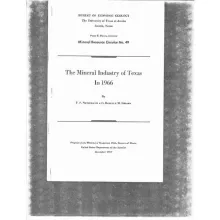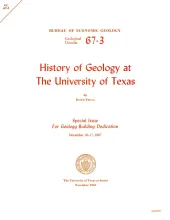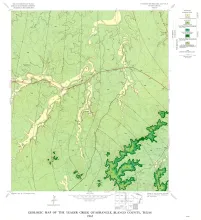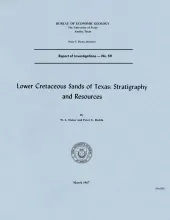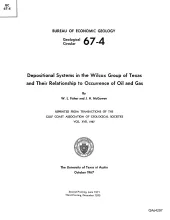This history of geology at The University of Texas was prepared for the dedication of the new Geology Building, November 1967. It is a brief history; many details have been omitted. The names of most graduates and some faculty will not be found. The mission was to summarize some important landmarks in Geology at The University of Texas and to describe the personalities and personal relationships that explain many of the decisions that have brought us to the present. I propose a toast to those who have made us what we are.----- Keith Young
Lower Cretaceous sands have long been important aquifers in Central, North-Central, and North Texas. In recent years these sands also have been sources of high-silica industrial or specialty-purpose sand. Lower Cretaceous sands of northern Texas and Cenozoic sands of the Texas Coastal Plain comprise the main resources of high-silica sands in the State. Knowledge of their occurrence, distribution, stratigraphic relation, quality, and suitability for industrial uses is necessary to their future development.
Regional investigation of the lower part of the Wilcox Group in Texas in outcrop and subsurface indicates seven principal depositional systems. These include: (1) Mt.


